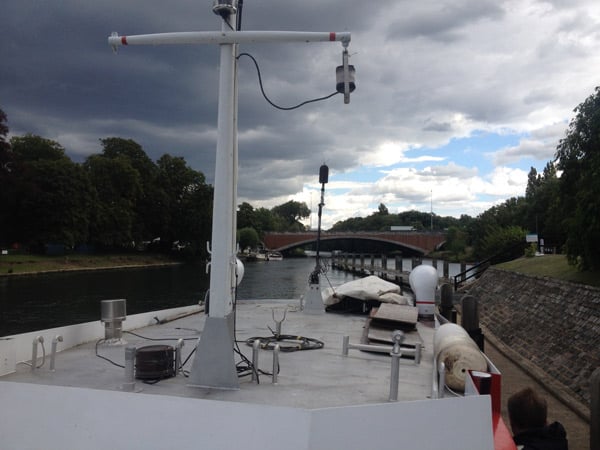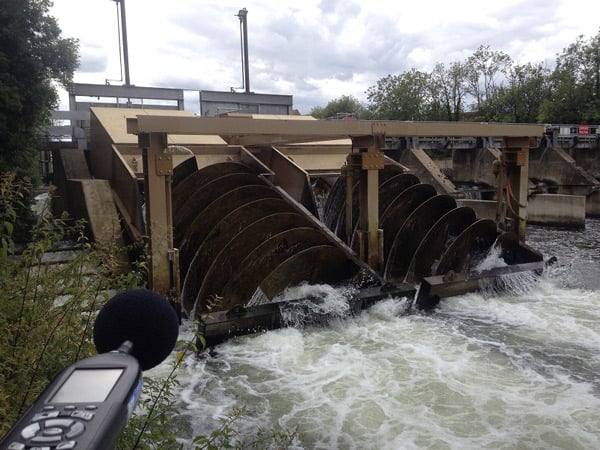Archimedean Screw Hydropower Turbine Installation – River Thames
The proposal to create a triple Archimedean screw, micro-hydropower scheme on the River Thames presented a unique challenge for the acoustic consultancy team at Sound Solution Consultants.
The hydropower development was proposed near to a hotel complex and various residential dwellings that overlook the River Thames and development proposal. The environmental problem to overcome, was planned coexistence of a noise-generating, renewable energy development in a noise sensitive area. The scale of the proposed installation was larger than that commonly seen for this type of renewable energy technology.
The services provided for the project started with a noise impact assessment for planning; liaising with the Local Planning Authority to understand and address concerns over noise impacts from the proposal. Access was granted by the client to obtain data from a similar installation along the River Thames, that was used within noise modelling to illustrate the acoustic effect of the development in the local environment.
The sound from Archimedean screw turbines is relatively unique in that, a proportion of energy relates to a mechanical element (e.g. a generator) at the top of the system but a significant proportion of sound relates to water movement through the screw system.
On the basis that the mechanical element of the scheme would be suitably abated, by means of an adequately ventilated enclosure; the Environmental Health Department were accepting of the development proposal which subsequently gained planning approval without noise objections. Further design was however required to detail the scheme prior to installation.
“Water noise (i.e. noise from water passing over the screw): No adverse comment. Generator / mechanical Noise: … to achieve the implied protection from noise a detailed final specification is required and given that a small air gap can dramatically reduce sound attenuation properties of an enclosure careful installation and ongoing maintenance are essential.”
Following development approval, detailed design work was undertaken with the hydropower design team to assist conditional sign-off as to ensure a low-noise, renewable development.
Various innovative and technical, mitigating design approaches have been proposed on this scheme that set a precedent for low-noise, micro-hydro development.

